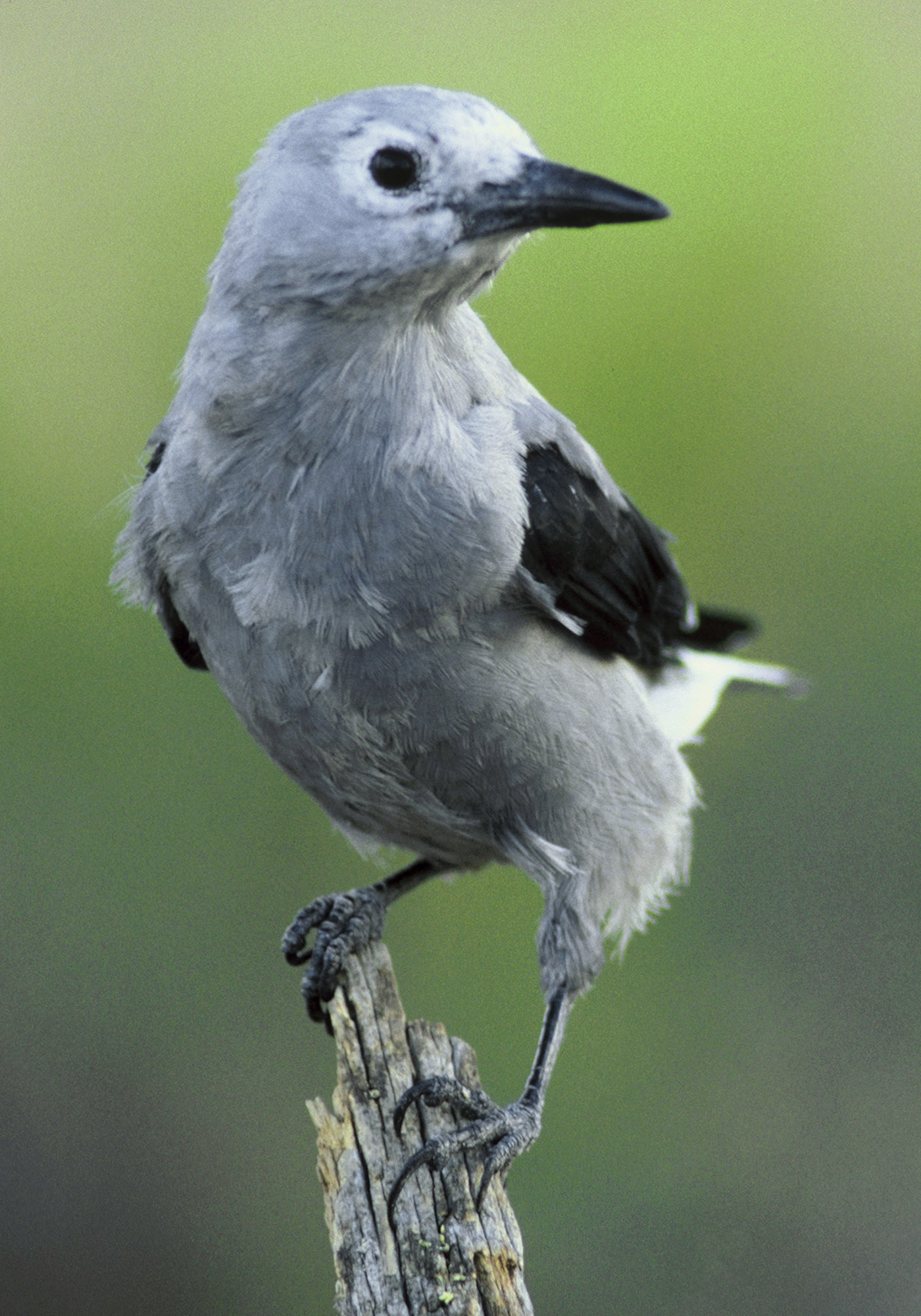Somewhere east of here, in the high mountains, the search is on. Amid a winter-silent landscape with stately pines swaying high above, they scratch about where the snow lies thin. In protected spots they hurry over needle-strewn ground, eyes aimed low. Somehow - remarkably - they remember.

We had some vague idea of what they might be and back at my sister’s home confirmed it. They were indeed Clark’s Nutcrackers, named in honor of Captain William Clark, who was the first non-native to observe and record them in his journal on his epic trek into the Northwest. In the late summer and fall they congregate to collect the seeds from evergreen cones, burying them in the ground - much as squirrels do - to provide themselves with food through the long, cold winter. Amazingly, they remember where they have cached them, and continue to dig up their dinner through the winter and well into spring. Nesting early, they are able to raise their young on the spoils of the year before.
Dave Menke, U.S. Fish and Wildlife Service


And so, the nutcrackers busily “sow” away, doing what they need to do to survive. They have no idea of the possible far-reaching effects of their actions.
Neither do we.
Remember this: Whoever sows sparingly will also reap sparingly, and whoever sows generously will also reap generously. ...Now he who supplies seed to the sower and bread for food will also supply and increase your store of seed and will enlarge the harvest of your righteousness. You will be made rich in every way so that you can be generous on every occasion, and through us your generosity will result in thanksgiving to God. 2 Corinthians 9:6, 10 - 11
_______________________
William Clark, August 22, 1805, in the canyon of the Salmon River, in what is today Idaho:
I saw to day [a] Bird of the woodpecker kind which fed on Pine burs it's Bill and tale white the wings black every other part...
Meriwether Lewis, May 28, 1806, at Weippe Prairie, in today's Idaho: 
since my arrival here I have killed several birds of the corvus genus of a kind found only in the rocky mountains and their neighbourhood. [it] has a loud squawling note something like the mewing of a cat. the beak of this bird is 1-1/2 inches long, is proportionably large, black and of the form which characterizes this genus. the upper exceeds the under chap [beak; properly, mandible] a little. the head and neck are also proportinably large. the eye full and reather prominent, the iris dark brown and puple black. it is about the size and somewhat the form of the Jaybird tho reather rounder or more full in the body. the tail is four and a half inches in length, composed of 12 feathers nearly the same length. the head neck and body of this bird are of a dove colour. the wings are black exccept the extremities of six large f[e]athers occupying the middle joint of the wing which are white. the under disk of the wing is not of the shining or g[l]ossy black which marks its upper surface. the two feathers in the center of the tail are black as are the two adjacent feathers for half their width the ballance are of a pure white. the feet and legs are black and imbricated with wide scales. the nails are black and remarkably long and sharp, also much curved. it has four toes on each foot of which one is in the rear and three in front. the toes are long particularly that in the rear. This bird feeds on the seed of the pine and also on insects. it resides in the rocky mountains at all seasons of the year, and in many parts is the only bird to be found.
Journal excerpts are from
The Journals of the Lewis and Clark Expedition edited by Gary E. Moulton (Lincoln: University of Nebraska Press, 1983–2001)
Clark's Nutcracker picture files



nice story...your drive...along the river...mountains surround...sounds beautiful!
ReplyDelete(i miss the mountains...just smaller rolling hills here in north FL)
i guess the nutcracker's behavior...his 'job'...goes to prove that everything in nature has it's purpose!